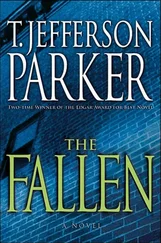Clay looked briefly at the CDL and handed it back to me. His hand was clean and his thumbnail trimmed back short. He ran his free hand over me again, said he was sorry. “Take off the hat.”
I did, showed him the empty crown, brushed my hand through my hair.
“Okay. What do you know about me?”
“That you were in Romania during the war. That you are in the care of Dr. Paige Hulet of Arcadia hospital. That you are not supposed to leave that hospital and they are looking for you. That you have suffered psychotic breaks in the past but have been responding well to treatment.”
He eyed me skeptically. “All true but the last. The drugs at Arcadia pushed me further and further underwater. Deep, dark, black fucking water. Full of voices and faces. Terrible visions, day after day. Real? Not real? It got worse and worse. Every med they tried. Even Dr. Hulet couldn’t get them right. Then a force came into me. It told me to stop poisoning myself. Four weeks ago I started puking up the pills, back in my room. But there’s a half-hour curfew after meds break to keep us from doing that. So most of it soaks in. Then, starting last week, no more meds at all.” Clay spread his hands to show me they were empty.
“How are you doing, Clay?”
“How do I look?”
“Good.”
“Sometimes I feel almost clear. Like I’m right on the edge of absolute clarity. But then it goes away without any warning. And I’m under the black water again with the voices and faces I’ve always seen and heard.”
“‘Always’?”
“Since the war.”
Clay turned and looked at himself in the mirror, then back at me. “You sit here at the desk. I’m going to sit on the bed against the pillows. I have a friend but she won’t be back until much later. Do not touch the computer unless I say you can. I want to tell you a few things before I show you what I have.”
I sat, took a small notepad and pen from my coat pocket. “Interesting dolls.”
“Romanian. Dolls are a folk art there.”
“Did you bring them home?”
“We hid flash drives in them,” he said. “Sewed them into the undersides. The videos I’m about to show you.”
“‘We’?”
“Me and Vazz. He’s dead. They killed him.”
“Who killed him?”
“Don’t lead me ahead,” said Clay. “Let me go at my own speed.”
“Take all the time you want.”
He looked down at me, then lay on the bed, his back against pillows and a headboard that creaked.
I asked him if I could record. “Nell wants authenticity,” I added.
“I’ve got all the authentic she can handle.”
“There. You’re on, Clay Hickman.” I tapped my recorder app and set the phone on the table by the swordfighters.
“I was born too early and wasn’t healthy,” said Clay. “Bad heart. So, operations. I spent my whole life working hard to get strong like other people. Like my sisters, then teammates, and then strong like Dad. In baseball I was all-league, all-conference, all-CIF as a senior. Third base. Then in the Air Force I was near the top in everything. I enlisted in 2006. Had to get Dad and Mom’s permission because I was only seventeen. I didn’t want special Hickman favors because of my family. I did really well in basic, was thinking pilot. But I really shined at the SERE training. That’s survival, evasion, resistance, and escape. So they put me to work as an assistant trainer. Youngest one ever. I’m good at using the mind to overcome adversity. Because I’d spent my whole lifetime doing it. There are similarities between resisting pain and building a sound body.”
“I’ve heard the SERE is intense.”
“Somewhat. I did mostly the simulations. We’d make our students as frightened and miserable as we could. Within reason. You do have to understand that none of it is like real detainee interrogation or abuse. Did you serve?”
“Marine Expeditionary Force, Fallujah one.”
“That was 2004,” said Clay. “The Blackwater contractors.”
It told him I did a month of door-to-doors looking for the guys who did it.
“I was still two years from enlisting,” he said. “Couldn’t wait to join the Air Force. Nine-eleven changed the way I saw myself, and the world. I realized my country needed me.”
“I thought that, too,” I said. “I was just out of college when they hit the Trade Center.”
Clay seemed to consider this. He adjusted himself against the pillows, and the headboard squeaked. He worked the semiautomatic out of his waistband and set it on the mattress beside him. He looked into the bathroom for a moment, then trained his attention on the curtained front window. I noted that the curtain was open just enough to let him see outside from where he sat.
It looked like two people had slept in the bed. I glanced at the open suitcase on the far side of it, up against the wall, saw the blow-dryer lying on top. A faint feminine smell hung in the small room. Like Clay, I could see the bathroom from where I sat. He had duct-taped a pink handheld mirror to the wall near the bathroom window. And wedged an empty toilet paper roll behind the mirror so he could see the window from the bed. An early-warning system. The window screen had been removed and set against the wall, behind the toilet.
“How is Nell?” he asked.
“Nell equals busy.”
“But on TV she always seems so calm.”
“She is, by the time she’s on camera. A lot of actors and performers are that way,” I said.
“Do you think she’ll go for this?”
I opened my hands: Hopefully.
He looked to the window again, then brought his knees up and wrapped his arms around them. “Okay. One day at Fairchild — that’s the Air Force base where the SERE school is — a big shot came to visit. Dr. Briggs Spencer. He was kind of a legend there. They talked about him and his partner — Dr. Timothy Tritt. They had been instructors there for years. Really got into it. Then after 9/11 they went private and helped start up the interrogation program at Guantánamo. Then Abu Ghraib. Then the black sites the CIA was allegedly in charge of. They were making a shitload of money. The rumor was, Spencer and Tritt came through Fairchild every four months, looking for top recruits. Talented guys to put to work in the prisons.”
“I remember reading about them.”
“So, right in the middle of my ‘Psychological Defense Against Mechanical Pain’ class, the actual Dr. Briggs Spencer walks in and sits down in the back.” Clay stared at me, nodding and smiling.
“Were you nervous?”
Suddenly he looked to the bathroom, his gaze raised high — window- and mirror-level. Then back to me. “No. I went on with my demonstration. One of the SERE methods was to use basic autogenics to create a useful dialogue between your conscious mind and your body to reduce the effects of stress. This was pure Spencer-Tritt. We had their training manuals. There was also a component of self-hypnosis. So, under stress, they taught, you focus your mind on a specific belief or idea or person that you are willing to undergo the torture for. For me personally, it had almost always been for my mom and dad and sisters. But you could pick a girlfriend or a buddy, or even a pet, and focus on that. Under interrogation, then, you would imagine that thing and you would create a conversation. You could even speak the words out loud if you wanted, which would generally confuse an interrogator, which we considered useful resistance. But I had added something of my own to that technique. Something I knew worked. If you, during pain, could combine that image and aural construct with three-part breathing — two short inhales through the nose followed by a fast loud exhale through the mouth — you were creating emotional resistance and a physical response. This satisfies the powerful fight-or-flight instinct. It gives you something to do. It’s not unlike Lamaze for childbirth.”
Читать дальше












